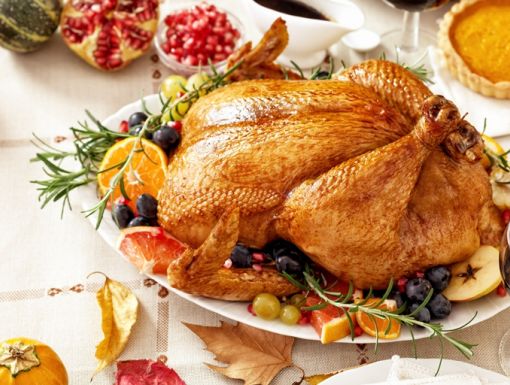
How to Choose the Healthiest Cuts of Meat
It seems that more and more people are becoming vegan, and rightfully so with all the health benefits that can come with eliminating the animal-based saturated fats and the benefits for our cholesterol & heart health.
However, our culture is infused with sensational experiences, seductive festivals and breathtaking dishes, with many of them centered on meat. Research and advisory firm Rabobank says that the average American eats almost four pounds of meat a week, and therefore, in a world full of delectable meats, going vegan can be difficult. Besides, there isn’t a one size fits all diet for everyone, but, being healthy is for everyone.

Where Nutritious Meets Delicious
Learn more about the Eat Fit initiative and find an Eat Fit partner near you.
If your diet includes meat, like 97% of Americans according to the Pew Research Center, then take a look at the below guidelines on making the healthiest, meat, fish, and poultry choices.
Choose the Leanest Cuts of Meat
Calories and saturated fat content vary depending on whether you choose lean, medium-fat, or high-fat meats.
Most, skinless chicken, turkey and fish are all lean meats as well as some red meat and pork options; especially with minimal marbling (saturated fat) and fat-trimmed pork.
The below list provide examples of lean meats that you should consider.
Beef:
- Eye of round, sirloin, flank, tenderloin, filet
- At least 93% “extra lean” ground beef (or higher, if available where you shop)
Pork:
- Ham, tenderloin, Canadian bacon
- Center cut pork chops
- Center-cut bacon (1 oz. = 2 slices)
Lamb:
- Lamb sirloin
Veal:
- Veal chops, veal roasts
Poultry:
- Skinless chicken or turkey (can leave the skin on while cooking, just remove before eating)
- Ground turkey breast (check out this great recipe for spaghetti squash and turkey meat sauce!)
- Turkey sausage & chicken sausage turkey pepperoni; without added nitrates/nitrites (1 oz. = 15 pieces)
Fish:
- Any & all fish! We love this recipe for Ahi Tuna with fresh Mango Salsa.
Aim for no more than 3 ounces (85 grams) of meat per meal, no more than a couple of times a week. That's about the size of a deck of cards. Three ounces also equals half of a boneless, skinless chicken breast, or one skinless chicken leg with thigh, or two thin slices of lean roast beef.
To help maintain the healthy aspect of these meats, consider grilling, lightly sautéing or searing in a touch of olive oil, baking, roasting, or something similar, rather than frying!
*Each of the above meats are between 35-55 calories per ounce and each ounce of meat contains approximately 7 grams of protein. Recommended portion sizes vary per person. Consult a registered dietitian for advice on how to incorporate these lean meats and appropriate portions into your meal planning.
Editor's note: This article was originally published on October, 16, 2017.


